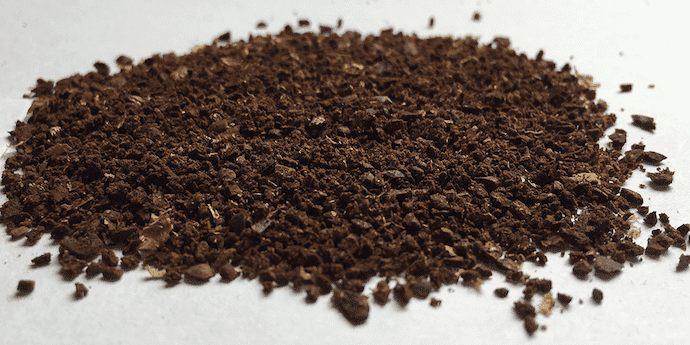
Cold brew coffee, known for its smooth, mild flavor profile, diverges significantly from its hot brewed counterparts, primarily due to its unique brewing process. This method involves steeping coarse-ground coffee beans in cold water for an extended period, usually 12 to 24 hours. The significance of grind size cannot be overstated in this process, as it directly impacts extraction rate, flavor, and overall quality of the cold brew.
Key Takeaways
- The optimal grind size for cold brew is coarse.
- Coarse grind is preferred because it facilitates a slower extraction process, essential for cold brewing, reducing the risk of over-extraction and bitterness.
- Grind size influences both extraction and flavor; a coarser grind results in a smoother, more balanced cup.
- Grinding coffee beans at home for cold brew requires attention to consistency and granularity.
What Makes the Coarse Grind Ideal for Cold Brew?
The cold brew method relies on time rather than heat to extract the coffee’s flavors, oils, and caffeine. A coarse grind is ideal because it presents a larger particle size, reducing the surface area exposed to water. This slower extraction process ensures a smooth, sweet, and less acidic brew, distinguishing it from the more intense, often bitter flavors extracted through faster, heat-based brewing methods.
The Science Behind Coffee Extraction
Grind size is pivotal in determining the surface area exposed to water, directly influencing the extraction rate. A finer grind size increases the surface area, leading to a quicker extraction that is not suitable for the prolonged brewing time of cold brew. In contrast, a coarse grind promotes a balanced extraction over many hours, leading to the desired flavor profile of cold brew coffee.
Understanding the relationship between grind size, surface area, and extraction time is crucial for mastering cold brew preparation.
Types of Coffee Grinders for Cold Brew
When preparing cold brew, the choice between Burr and Blade grinders is crucial. Burr grinders are highly recommended for cold brew enthusiasts due to their ability to produce consistent, coarse grounds, essential for optimal extraction.
Unlike blade grinders, which chop beans inconsistently, burr grinders crush beans to a uniform size, ensuring even exposure to water. For the best cold brew, invest in a quality burr grinder.
How to Achieve the Perfect Coarse Grind at Home
Achieving the perfect coarse grind at home starts with your grinder selection. Follow these steps for consistent results:
- Select a high-quality burr grinder: Adjust it to the coarsest setting.
- Measure your beans: Use a consistent bean-to-water ratio for each batch.
- Grind in short bursts: To avoid overheating, which can affect flavor.
- Check the consistency: Look for a uniform, coarse texture, similar to coarse sea salt.
- Adjust as necessary: Experiment with your grinder’s settings to find the perfect coarseness for your taste.
Preparing Your Cold Brew: A Step-by-Step Guide
Cold brew coffee is both an art and a science, requiring patience and precision. Here’s how to brew the perfect cup:
- Grind your coffee beans coarsely, following the guidelines above.
- Mix your coffee grounds with cold, filtered water. The ideal ratio is 1:8 (coffee to water).
- Stir the mixture gently to ensure all grounds are wet.
- Cover and steep for 12-24 hours at room temperature or in your refrigerator.
- Strain the coffee using a fine-mesh sieve or a coffee filter. Repeat if necessary to remove all grounds.
- Serve over ice, diluted with water or milk to taste.
How Grind Size Affects Your Cold Brew
The grind size of your coffee beans is a critical factor in the cold brew process, significantly affecting the flavor and strength of your brew. A coarse grind is ideal for cold brew because it ensures a slow, even extraction, resulting in a smooth, robust flavor profile without bitterness.
If the grind is too fine, it can lead to over-extraction, making the coffee taste bitter and harsh. Conversely, too coarse a grind may under-extract, leading to a weak, underwhelming coffee.
Adjusting the grind size allows you to fine-tune your cold brew to your personal preference, balancing between strength and flavor. Experimenting with different grind sizes can help you discover the perfect setup for your taste, ensuring each cup of cold brew is exactly to your liking.
FAQs
What Is the Best Coffee Bean for Cold Brew?
The best coffee bean for cold brew is a medium to dark roast with a bold, robust flavor profile. These roasts provide the rich, smooth taste that cold brew is famous for. However, the ultimate choice depends on personal preference, so experimentation is encouraged.
Can I Use Pre-Ground Coffee for Cold Brew?
Yes, pre-ground coffee can be used for cold brew, but for optimal flavor, freshly ground coffee is preferred. Pre-ground coffee often lacks the coarseness and freshness that contribute to the rich taste of cold brew.
How Long Should I Brew Cold Brew Coffee?
Cold brew coffee should be brewed for 12 to 24 hours. The brewing time affects the flavor strength and profile, with longer times yielding a stronger, more concentrated brew.
Can Fine Grind Be Used for Cold Brew?
While a fine grind can be used, it is not recommended for cold brew. Fine grinds lead to over-extraction, resulting in a bitter and harsh flavor. A coarse grind is best for a smooth and balanced taste.
Final Thoughts
The key to a perfect cup of cold brew lies in the coarseness of the grind. A coarse grind ensures a slow, even extraction, capturing the essence of the coffee bean without the bitterness associated with over-extraction. While the journey to finding your ideal cold brew setup may involve experimentation with grind sizes and brewing times, the effort is well worth it.
We encourage coffee enthusiasts to explore different beans, grinders, and ratios to discover their personal cold brew preference. Remember, the quality of your equipment and coffee selection plays a significant role in the final brew. Happy brewing!









